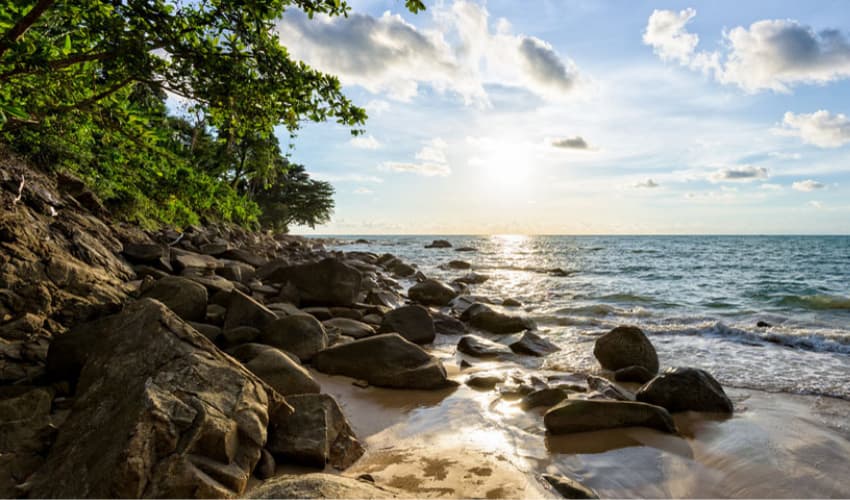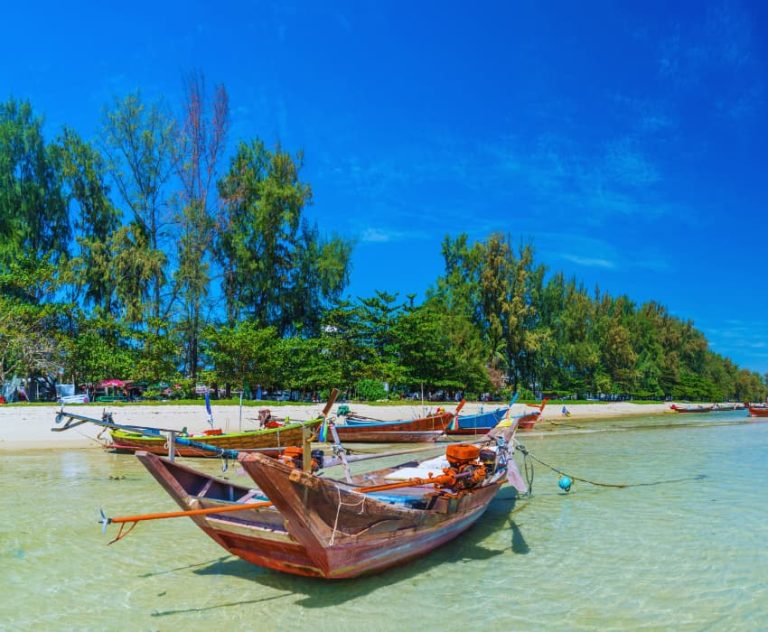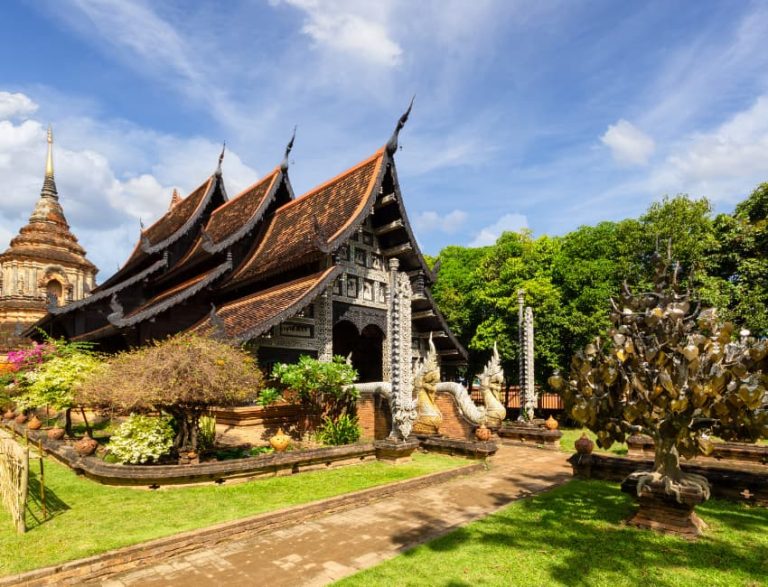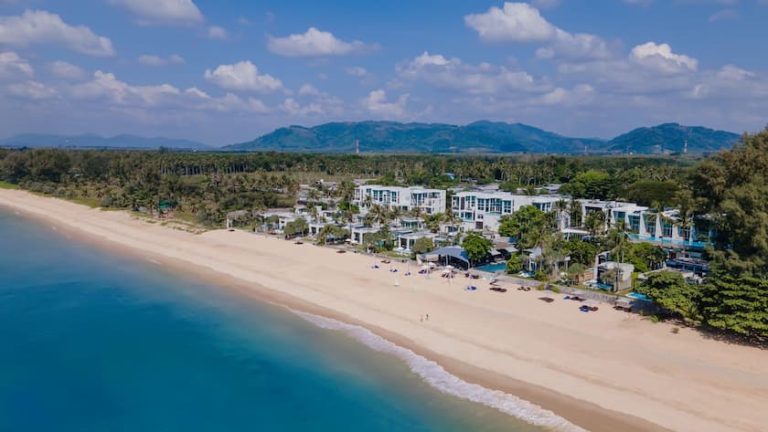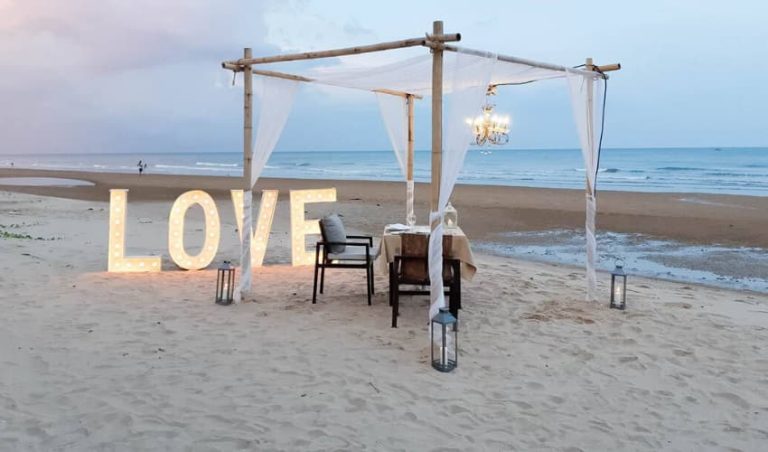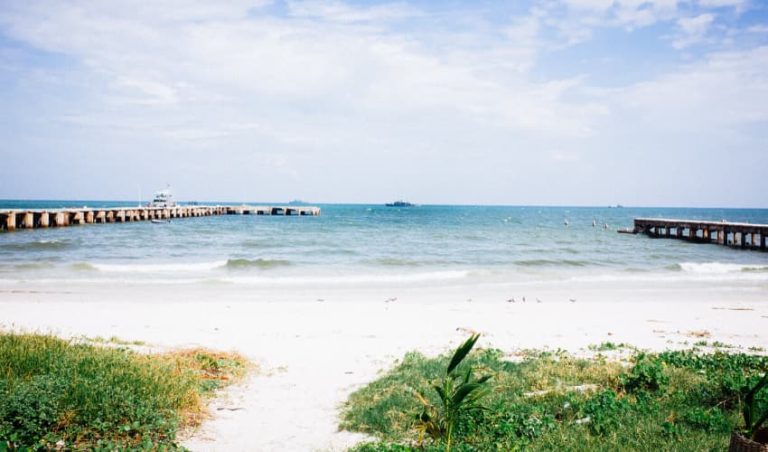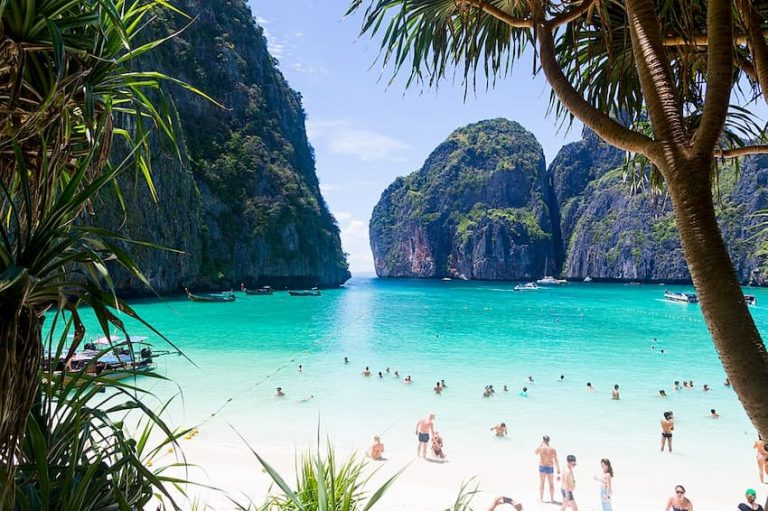At Aleenta Phuket – Phang Nga Resort and Spa, the best holidays offer a harmonious balance of discovery and relaxation. For those seeking to explore Thailand’s untouched landscapes, Khao Lak–Lam Ru National Park offers an inspiring journey into the heart of nature. Just a short drive north of our resort, this extraordinary park showcases a magnificent blend of rainforest, waterfalls, hidden beaches, and vibrant wildlife, all waiting to be explored.
The Story Behind Khao Lak–Lam Ru National Park
Khao Lak–Lam Ru National Park is named after two prominent peaks: Khao Lak and Lam Ru. The park’s boundaries stretch across four districts – Takua Pa, Mueang Phang Nga, Thai Mueang, and Kapong- covering over 125 square kilometres of diverse ecosystems. Originally established to protect the coastal seashore, the park expanded in 1984 to encompass inland forests and critical watershed areas, safeguarding the region’s natural beauty and vital ecosystems.
In 1991, it officially became Thailand’s 66th national park. Despite suffering devastation during the 2004 Indian Ocean tsunami, both the landscape and local communities have shown remarkable resilience. Today, the park stands renewed, offering visitors a peaceful and thriving natural haven.
Coastal Forests, Waterfalls and Hidden Beaches
The park’s richly varied landscapes offer visitors a striking contrast of environments. Inland, dense tropical rainforests rise to mountain peaks reaching over 1,000 metres, providing a cool, shaded refuge filled with the sounds of tropical birds and flowing streams. Along the coastline, dramatic rocky cliffs meet the gentle shores of the Andaman Sea, creating secret beaches and stunning viewpoints.
Visitors can explore lush mangrove forests that protect the coastline and nurture marine life, and beach forests that blend seamlessly into the golden sands. Whether wandering through towering trees or strolling along deserted beaches, the ever-changing scenery of Khao Lak–Lam Ru is endlessly captivating.
Flora and Fauna of Khao Lak–Lam Ru
Nature lovers will find the park’s biodiversity truly remarkable. The forests are home to towering Dipterocarpus trees, fragrant champak (Magnolia champaca), vibrant orchids, and lush ferns. Cashew trees and screw-pines thrive closer to the coast, adding a tropical charm to the beachfront trails.
Wildlife abounds for those patient enough to watch and listen. Playful macaques and dusky langurs can often be spotted among the trees, while giant squirrels leap between the branches overhead. Bird enthusiasts may catch sight of rare species such as the white-bellied sea eagle, the oriental pied hornbill, and the striking scarlet minivet. The undergrowth hides a myriad of butterflies, including the majestic birdwing species, and reptile lovers might glimpse a reticulated python or a sleepy monitor lizard basking in the sun.
In the marine areas, the waters are alive with colourful coral reefs, feather stars, moray eels, and playful schools of tropical fish — a gentle reminder of the delicate balance between land and sea.
Waterfalls and Nature Trails
Khao Lak–Lam Ru offers a network of well-maintained trails and enchanting waterfalls perfect for a day of adventure. The Lam Ru Waterfall, the park’s largest, cascades over five tiers through dense rainforest. Easily accessible from the visitor centre, it offers peaceful picnic spots and cool pools ideal for a refreshing dip after a walk.
Ton Chong Fa Waterfall provides a rewarding trail experience for more avid hikers. A scenic 5-kilometre trek through lush forest leads to this beautiful cascade, where the adventurous can swim in the natural pools at the base. Another trail, stretching around 7 kilometres, takes a little longer but offers deeper immersion into the park’s untouched jungle.
Walking in Khao Lak–Lam Ru is not only about the destination; it’s about the experience of being enveloped by nature — hearing bird calls, feeling the mist from distant waterfalls, and breathing in the fresh, earthy scent of the forest.
Beaches within the National Park
Visitors will find some of Phang Nga’s most beautiful beaches along the park’s coastal edge. Hat Khao Lak Beach, a stunning five-mile stretch of soft white sand, is a highlight. Divided into three distinct parts — Bang Niang Beach to the north, Nang Thong Beach in the centre, and Sunset Beach to the south — each section is charming.
Bang Niang Beach is slightly livelier, with relaxed beachfront cafés and easy swimming access. Nang Thong is the most developed, close to small shops and resorts, perfect for combining a beach day with a leisurely lunch. Sunset Beach, as the name suggests, offers magnificent evening views and a quieter, more secluded atmosphere ideal for romantic walks.
Within the park itself, Small Sandy Beach (Hat Lek) is a hidden gem, accessible via a short, scenic trail. Sheltered by rocky headlands and fringed with lush greenery, it offers crystal-clear waters perfect for a peaceful swim or snorkel.
Activities for Nature Lovers and Families
Khao Lak–Lam Ru National Park is perfect for solo travellers and families seeking meaningful nature-based experiences. From gentle nature walks to exploring waterfalls and snorkelling in shallow bays, activities suit all ages and energy levels.
Families can enjoy safe swimming spots, easy trails rich in wildlife, and opportunities to introduce younger visitors to the wonders of tropical nature. The park also encourages eco-friendly practices, fostering a sense of respect and connection to the environment.
Photography enthusiasts will find endless inspiration, while those seeking quiet reflection will discover peaceful spots ideal for picnics or simply listening to the sounds of nature.
Nearby Attractions Worth Discovering
A visit to Khao Lak–Lam Ru can easily be combined with other nearby attractions that offer enriching experiences.
The Phang Nga Elephant Park, located just 15 kilometres away, is a responsible, family-run sanctuary dedicated to ethical elephant care. Visitors can learn about elephant conservation and spend meaningful time with these gentle giants in a respectful, natural environment.
The Sea Turtle Conservation Centre, just south of the park, is a must-visit for wildlife lovers. Here, guests can learn about efforts to protect endangered sea turtles, meet rehabilitated turtles, and even witness the release of hatchlings during special events like the annual Turtle Festival in March.
For those interested in the region’s history, the International Tsunami Museum offers sobering yet important insight into the events of 2004. It honours the resilience of the local communities and reminds visitors of nature’s power.
Your Visit to Khao Lak–Lam Ru National Park
Visiting the park is straightforward and rewarding. The best time to explore is between November and April, when dry conditions make trails and beaches most accessible.
The entrance fee for international visitors is modest (approximately 200 Baht for adults and 100 Baht for children), and facilities include a visitor centre, clean restrooms, and a simple park-run restaurant offering Thai meals with sea views.
Comfortable footwear, sun protection, insect repellent, and plenty of water are recommended. While some trails suit casual walkers, others may require a moderate fitness level, particularly in humid conditions.
Experience the Natural Side of Phang Nga with Aleenta
At Aleenta Phuket – Phang Nga Resort and Spa, we pride ourselves on offering guests effortless access to some of southern Thailand’s most awe-inspiring natural landscapes. Khao Lak–Lam Ru National Park, with its vibrant forests, tranquil beaches, and abundant wildlife, provides the perfect opportunity to reconnect with nature and experience a more peaceful side of Thailand.
After a day of discovery, returning to the comfort of Aleenta — where luxury meets serenity — ensures that every journey is as restorative as exciting. From the soothing spa treatments to the barefoot luxury of our private villas, your adventure into Phang Nga’s wild beauty is perfectly complemented by the warmth and hospitality of our beachfront sanctuary.
Related Articles:
- National Parks In Phang Nga Province
- Ao Phang Nga National Park
- Samet Nangshe Viewpoint
- Ten Reasons to Visit Phang Nga
- Planning Your Phang Nga Holiday
Aleenta Phuket
Phang Nga Resort & Spa
Phang Nga Resort & Spa
33 Moo 5, Khok Kloi,
Takua Thung, Phang Nga
82140 Thailand
T: +66 (0) 76 580 333

